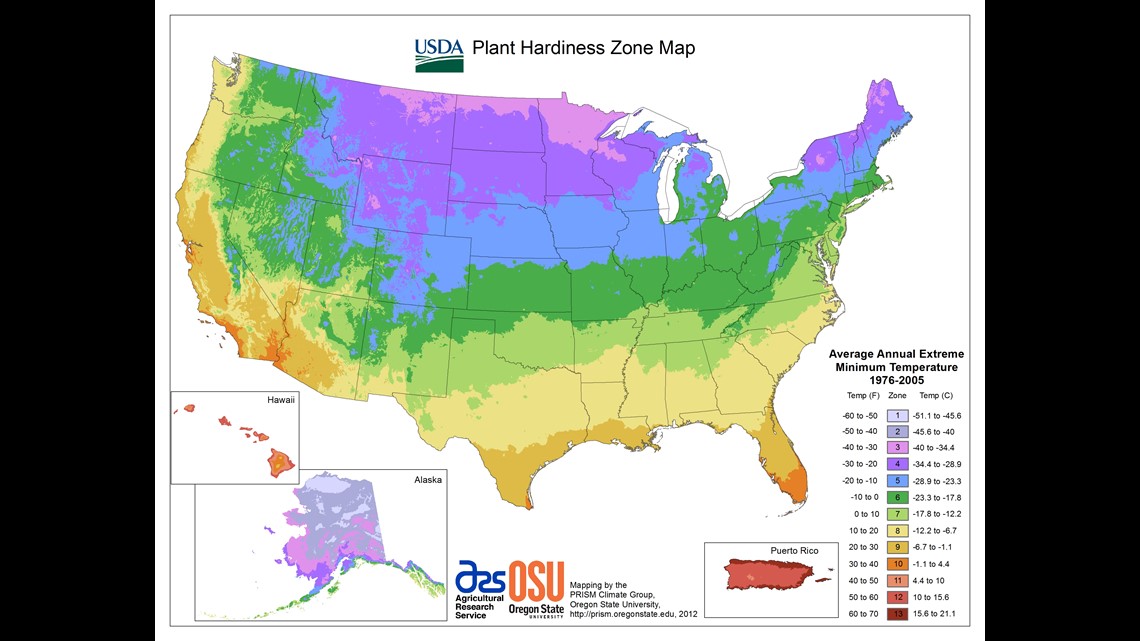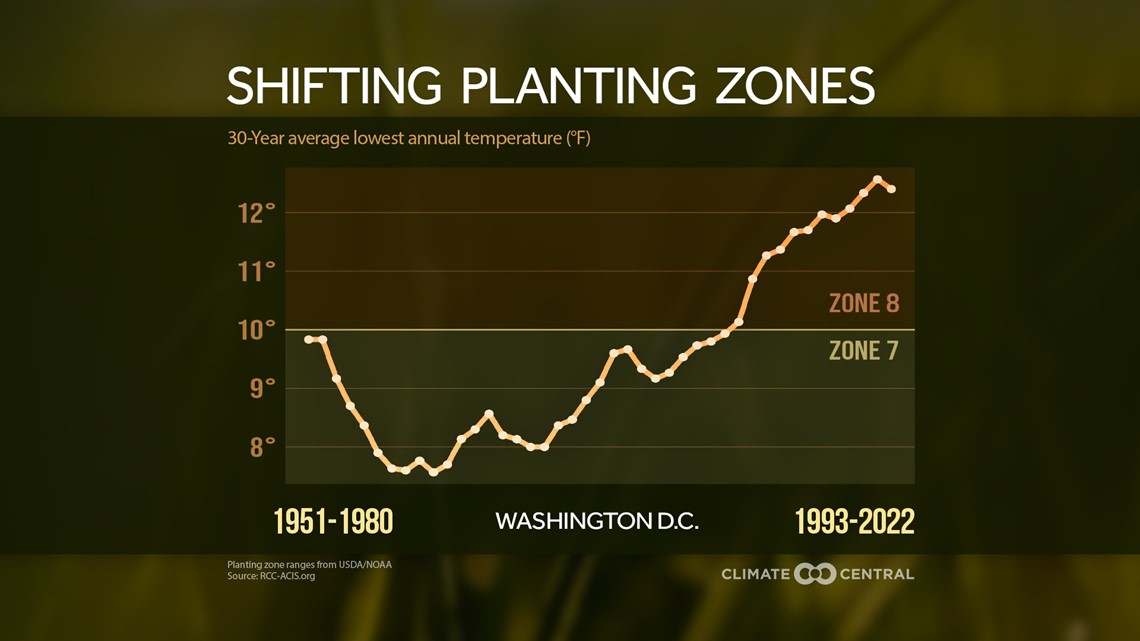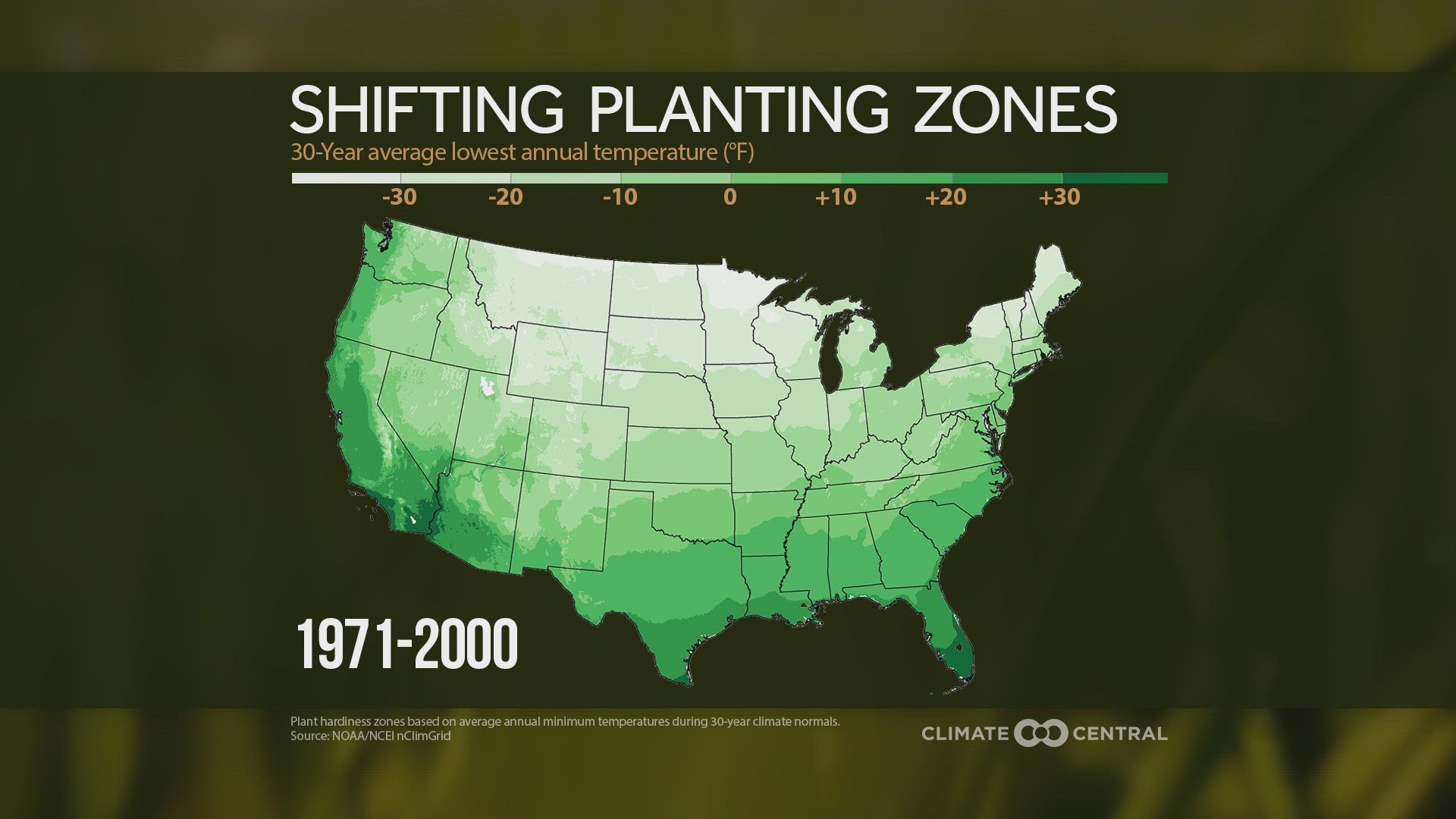WASHINGTON — If you have any kind of green thumb, you probably know that there are different planting zones depending on where you live. The geographic zones are defined by how cold it gets in the winter.
The United States is divided into 13 plant hardiness zones based on annual minimum temperature. Areas you see in various shades of red and orange are associated with warmer temperatures and higher zone numbers. Places farther north in green and blue typically see cooler weather and therefore have lower zone numbers. And as our winters get warmer, planting zones are shifting north.


Locally here in D.C., you can see how the 30-year average lowest annual temperature has gradually risen over the past several decades, and while traditionally the area falls under Zone 7...for years we've been able to plant for Zone 8.


Susan Cook-Patton, a senior forest restoration scientist with The Nature Conservancy explains, “The species that used to grow great where we are, are starting to shift northward or up into the mountains more.”
As winter temperatures warm and a location's planting zone increases, certain plants and insects gain the ability to expand into areas where they previously wouldn't have survived the coldest months of the year.
While this can have benefits like growing high value crops where we previously couldn't, it also means that harmful, invasive plants and insect species can thrive in more areas.
“Kudzu, you know the vine that ate the south, it’s slowly creeping up into our area because we don’t have those cold temperatures to knock them back,” explains Cook-Patton. She also says what you plant around your home and in your gardens can make a difference in the health of our ecosystem and actually help combat the effects of climate change.
Cook-Patton encourages, “As people are thinking about what to plant you might want to think about climate change."
And local nurseries, like American Plant, are making it easy to adapt similar gardens around your own home.
"Native grasses are a great way for people to get started in natives, especially if they have a spot in the yard that gets a lot of sun and is kinda dry," explains Colin Kuhn, General Manger of American Plant in Bethesda.
Kuhn adds, "Echinacea is great because it comes in a lot of different sizes and colors and they're great for our native pollinators." He also says that we have to adapt to the effects of climate change like prolonged drought and excessive rainfall. "I think a big thing to look forward to in the future is going to be rainwater management in our landscapes."
"We're trying to catch as much runoff as we can before it enters into streams before it causes flooding issues," adds Kuhn.
Research from the United States Department of Agriculture projects a dramatic northward shift of plant hardiness zones with continued carbon emissions. Another study estimates annual low temperatures could shift north at a rate of 13 miles per decade.
To learn more about what grows best in your planting zone, just visit the USDA website.
Watch Next: Humans contribute to climate change

